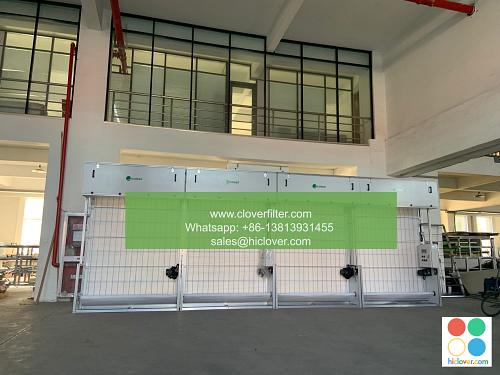Air Filter Installation: A Review of the Common Mistakes to Avoid

Proper air filter installation is a crucial step in maintaining the efficiency and effectiveness of your heating, ventilation, and air conditioning (HVAC) system. A well-installed air filter can help improve indoor air quality, reduce energy consumption, and prevent equipment damage. However, if not done correctly, it can lead to a range of problems, including reduced system performance, increased energy bills, and even health issues. In this article, we will review the common mistakes to avoid during air filter installation and provide tips on how to ensure a successful installation in various application areas, including residential HVAC systems, commercial air filtration systems, and industrial air purification systems.
##
Common Mistakes to Avoid
When it comes to air filter installation, there are several common mistakes that can be avoided with proper knowledge and planning. Some of the most common mistakes include:
* Incorrect filter sizing: Using an air filter that is too small or too large for the HVAC system can lead to reduced airflow, increased energy consumption, and decreased system performance.
* Improper filter orientation: Installing the air filter in the wrong direction can reduce its effectiveness and lead to premature clogging.
* Insufficient filter maintenance: Failing to replace or clean the air filter regularly can lead to a buildup of dirt and debris, reducing system performance and indoor air quality.
* Incompatible filter types: Using an air filter that is not compatible with the HVAC system can lead to reduced system performance and potentially cause damage to the equipment.
##
Residential HVAC Systems
In residential HVAC systems, air filter installation is critical to maintaining a comfortable and healthy indoor environment. To ensure a successful installation, homeowners should:
* Choose the right filter type: Select an air filter that is compatible with the HVAC system and meets the desired level of indoor air quality.
* Follow manufacturer instructions: Read and follow the manufacturer’s instructions for air filter installation and maintenance.
* Replace filters regularly: Replace the air filter every 1-3 months, depending on usage and manufacturer recommendations.
##
Commercial Air Filtration Systems
In commercial air filtration systems, air filter installation is critical to maintaining a healthy and productive indoor environment. To ensure a successful installation, facilities managers should:
* Conduct regular maintenance: Regularly inspect and maintain the air filtration system to ensure optimal performance.
* Use high-quality filters: Select air filters that meet the desired level of indoor air quality and are compatible with the HVAC system.
* Train staff on filter maintenance: Educate staff on the importance of air filter maintenance and provide training on how to properly install and replace filters.
##
Industrial Air Purification Systems
In industrial air purification systems, air filter installation is critical to maintaining a safe and healthy indoor environment. To ensure a successful installation, facility managers should:
* Choose filters that meet regulatory requirements: Select air filters that meet the regulatory requirements for indoor air quality and are compatible with the HVAC system.
* Conduct regular testing and inspection: Regularly test and inspect the air filtration system to ensure optimal performance.
* Develop a maintenance schedule: Develop a schedule for regular maintenance and replacement of air filters to ensure optimal system performance.
##
Conclusion
In conclusion, air filter installation is a critical step in maintaining the efficiency and effectiveness of your HVAC system. By avoiding common mistakes and following proper installation and maintenance procedures, you can ensure a successful installation in various application areas, including residential HVAC systems, commercial air filtration systems, and industrial air purification systems. Remember to choose the right filter type, follow manufacturer instructions, and replace filters regularly to maintain optimal system performance and indoor air quality. By taking these steps, you can help improve indoor air quality, reduce energy consumption, and prevent equipment damage. It looks like you didn’t include a prompt. Could you please provide one so I can assist you better?

